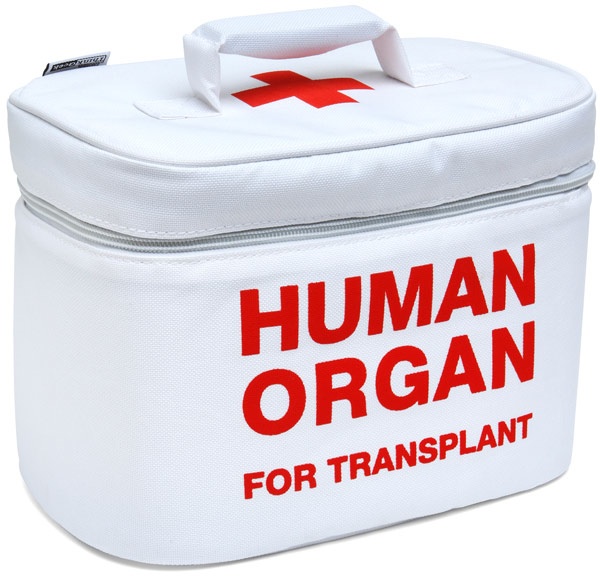As we discussed in our first outreach blog, step one is to establish a relationship with a provider or a network of providers through education or other interactions. Once you’ve created this relationship, you will want to capitalize on the potential additional volume for your program and institution, as well as be able to continue to provide the outstanding service your program is known for. In order to do this, you must be able to make working with you seamless and easy, without increasing the actual or perceived burden to the organization’s patients.
Read MoreDr. John Daller, MD, PhD, FACS
Recent Posts
Posted by Dr. John Daller, MD, PhD, FACS on Jul 23, 2015 10:22:00 AM
Posted by Dr. John Daller, MD, PhD, FACS on Jul 9, 2015 2:57:51 PM
In our next series of blogs, we will discuss the concept of outreach and how programs can use it to improve not only their volumes, but also their outcomes. Outreach can be simplistically defined as the act of reaching out to a group. It may also be defined as a systematic attempt to provide services beyond conventional limits to a particular segment of the community. In this blog, we will concentrate on the former definition, namely, reaching out to different groups to grow our program.
Read MorePosted by Dr. John Daller, MD, PhD, FACS on May 1, 2015 1:33:00 PM
When asked to evaluate workflow processes in transplant programs, we often here from hospital administrators that their transplant program is over-resourced and they do not understand why work-up time is so long, why patients complain that it takes so long to get a phone call returned or why the physicians always ask for more staff. " Do you know what your transplant staff is truly doing?", is usually the next question we ask. Not to our surprise, the answer is "of course".
Unfortunately, when asked to describe what the work consists of, it frequently is a recitation of the job descriptions that the staff was hired under. After we perform a time and work assessment and interview the staff, what we universally find is that the staff is being pulled in multiple directions, frequently performing clerical and administrative task that detract from patient care. No wonder work up times are so long and patient satisfaction scores are low.
Read MorePosted by Dr. John Daller, MD, PhD, FACS on Apr 27, 2015 3:51:00 PM
Tracking Data is a Key Component of QAPI Programs, not only for CMS but also now with UNOS
Read MorePosted by Dr. John Daller, MD, PhD, FACS on Mar 23, 2015 4:49:31 PM
As we assist various programs around the country, one of the things we are asked is how does a program balance staffing constraints while accomplishing the many administrative and clerical tasks that are required and still deliver high quality patient care. Frequently when addressing staffing situations, what we find is that programs may have sufficient staff but everyone is doing so many other tasks that it detracts from their true function. Other times, we find that the program is simply understaffed for the volume or number of patients that they are caring for. While the scenarios seem to be different and one would think require different solutions, an assessment of staffing needs begins with an understanding of each role and what tasks that role is actually required to do (not just what we think they are doing). Once the tasks are defined, an understanding of the work flow processes and the current operational chains that each task requires is needed.
Read MorePosted by Dr. John Daller, MD, PhD, FACS on Mar 10, 2015 10:27:12 AM
One of the many advances that have been achieved in transplantation care today is the ability of patients to return to their community physicians after a period of time for most of their long term care. While the ability to receive care closer to home has obvious advantages for transplant patients, it can pose challenges for the transplant centers that are responsible for the outcomes as well as for the community physicians who may not be as familiar with transplant specific issues. With the never ending demands on both transplant centers as well as their community partners, an effective way of managing the data flow between the centers and referral sources is imperative. This includes timely communication and recognition of laboratory and imaging studies. Manual transmission and review of these documents can be time consuming, costly and fraught with error, particularly if the paper does not reach the appropriate destination.
Read MorePosted by Dr. John Daller, MD, PhD, FACS on Feb 27, 2015 2:12:23 PM
One of the universal issues we face when asked to help a program that has below standard outcomes, is how that program handles workflow and data management challenges. A big part of managing a transplant program is collecting and managing all the information needed to make good decisions. For instance, regardless of the type of transplant, one common factor that determines who receives the Gift of Life, and when, is the Waitlist. Management of this seemingly simple list can become a daunting task when one considers the complexities of not only transplantation itself, but also of the information management required to determine appropriate candidates to place on the waitlist and ultimately carry out that transplant.
Read MorePosted by Dr. John Daller, MD, PhD, FACS on Feb 19, 2015 3:28:31 PM
A pressing issue in transplantation today is appropriate organ allocation and ensuring that the sickest patients and those who would benefit the most are afforded the gift of life. In order to be listed, all patients require certain specific data points in order to be successfully entered into the national database and deemed active on the waitlist. For some patients, such as those awaiting a lung or liver transplant, organ allocation is driven by scoring systems (the LAS and MELD score respectively) that are a reflection of disease severity.
Read More





